Vederkast will be launching their sophomore album And In The Abyss They Sleep on Rob Mules Records Nov 16th. In this regard we let Magnus Tornensis walk us through the process of recording their upcoming release. He also gave an insight into their mysterious band name, plus more cool stuff.
Who is Vederkast, and what is the story behind your band name?
We are four quite different individuals that happen to create music that we all find interesting and fun to play. Paul Aronsen on vocals and bass, Finn Fodstad on guitar and backing vocals, Sindre Bakland on guitar, and myself playing the drums.
The word Vederkast originated hundreds of years ago, and is connected to myth and superstition from the northern part of Norway. It was believed that if you upset the mystical people living underground, they could curse you for doing so. This was referred to as a Vederkast. We thought the word itself had a nice sound to it, and the mystical and dark background also fit the band’s sound, so that’s how it came about. It is also a word that is practically non-existent in today’s language so that makes it easier to locate us on the internet, which is obviously an advantage.
Your album is titled And In The Abyss They Sleep and consists of nine tracks. In short, how did it came about?
Regarding the music, we had the basic song structures down beforehand, but a good portion of it was either written or re-written in the studio while we recorded. This was a really challenging and fun way to work, and everyone pushed themselves and each other to be creative and effective. The fact that we recorded live meant that the entire take had to feel good for everyone, and with a lot of changes being made and new parts being added constantly it made the whole band stay very focused.
The song material is, if you ask us, as diverse as it is recognizable. We are always interested in exploring and mapping out a big musical landscape, and we feel that we have done that while maintaining a sound that we can call our own. You get the heavy riffs, deep drums and bass, proggy time signatures and song structures, as well as mellow moments where the melodies and harmonies are the key elements. We’ve also worked with some outstanding guest musicians – they really gave the songs that little something that we were after.
All of the songs on the album share a common theme regarding lyrics and the emotions that are conveyed through the music. It is not a concept album as such, because there’s not a specific plot developing throughout the record, but all the separate stories being told revolves around similar experiences, challenges and thoughts. Some of the lyrics are based on real events and some are not, but all of them address issues that affect people in different states of darkness, despair, and seemingly hopeless situations. That being said, there are some signs of better times ahead present too.
There was not really an initial plan to do this, it sort of just came to us as the music and lyrics were taking shape. There were some late night sessions following long days of recording that really opened our eyes to the direction the lyrics should take, so we first realised there was a «concept» to the lyrics while we were in the studio recording the album. It doesn’t feel right to give away too much of the meaning of each song, after all art should be open to interpret as one wishes. This is also the case for the band members since all of us see different stories unfolding in the same words, depending on who reads them and who wrote them.

Gutterommet Studios has recorded, mixed and mastered your album. What is the story behind it?
We worked with him (Yngvar Mehus) on our previous releases and when he wanted to do this album as well it was a no-brainer. We really like working with him and we feel that we are on the same page in regards to sound and what we want to do with the songs. We decided early on that we wanted to explore a completely different recording process than before, so we did not book a conventional studio for this recording. Instead we went to Bleik on the island Andøya and set up our own studio in the local community house. Sindre and Finn are both from the island, so it just made sense to go there and do it. Add to that a breathtaking scenery with the ocean and mountains, and you have the perfect place to be inspired and creative. The big hall has nice old woodboards on the walls and the natural reverb we got there was just amazing. In fact, all the reverb you hear on the drums are all natural from the actual room, no fancy plug-ins!
We wanted to record live with everyone playing together in the same room, and every song on the album was done that way. The fact that we used Kemper profiling for the guitars made it a lot easier to avoid things like mike bleed in the drums. That thing is great, we had all the guitar sounds we needed pre-made into that little box. So you can say that we used modern technology to record in an old-school way. That really paid off, because the album is so dynamic sounding, and the energy feels so good because we were all there playing and following each other’s vibe. So there’s kind of a 70s thing going on, along with more modern sounds, and we are very happy with it. Obviously some things were added later, but the main band takes were all live and we’re very proud of that.
Tell us about the album’s cover art?

The man behind it is Marni Kruse. A young, talented guy from Faroe Islands. Magnus contacted him, and presented the idea behind the album. Luckily for us he wanted to contribute, and he painted everything based on the concept of the album. We also got a former band mate, Erlend Julian Jensen, to help us complete the designing process.
What’s in store for Vederkast the coming year? Any tours planned?
We definitely want to tour as much as possible in the time to come. A tour following the release of the record is currently being set up, and we hope to fill up the first half of 2019 with dates during this fall. We are at a stage where we do most of the work regarding booking ourselves and that makes it harder to get the band out to where we want it to be. We hope this will change and we are in contact with some interesting people at the time.
Can you tell us about your influences, bands you like?
We come from a diverse musical background and everyone brings something different to the table, which is the reason why it can be a challenge to categorize the music. We see that as a good thing, as we ourselves are not necessarily all that genre-focused when listening to music. If you get something out of listening to it, then it’s good music, no matter what genre it’s supposed to be.
That being said, we did have some musical references for inspiration when we first started out, like The Mars Volta, Tool and Pantera. The funny thing is that, as far as we know, neither of those bands have been mentioned in reviews or by fans, so it’s safe to say that we managed to not sound like them even if we have listened a lot to them. We listen to a lot of different music, and it regularly happens that someone in the band thinks of a band that someone else have never really listened to. That is also a big part of what makes the music sound the way it does.
To try to sum it up including genres we could say that Vederkast’s music is somewhere between rock and metal, somewhere between prog and stoner, somewhere between epic and in-your-face.
Thanks to Magnus for an insightful and cool interview. Keep a tab on www.robmulesrecords.com for more news on their forthcoming releases the coming weeks. Cover art and more info on And In The Abyss They Sleep will be published in August.
Listen to Vederkast on Spotify
Visit their Facebook page.
Photos by Yngvar Mehus and Vederkast


